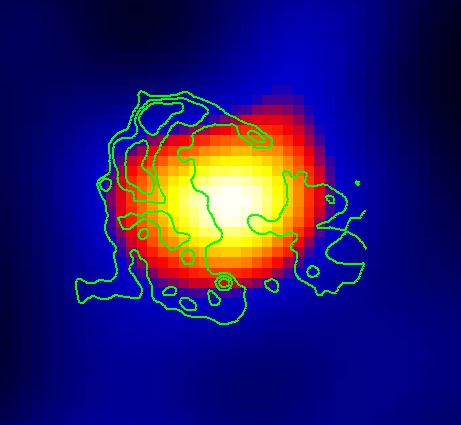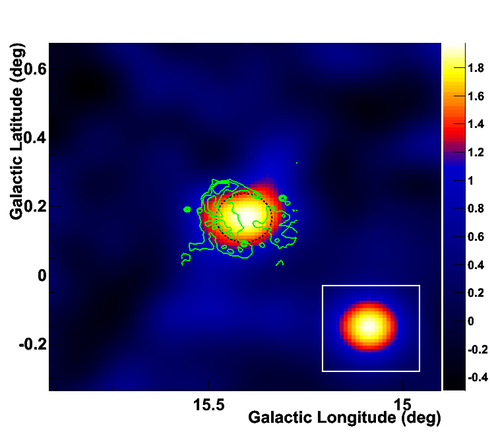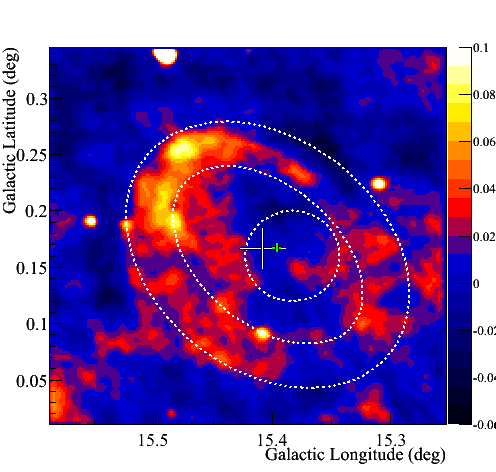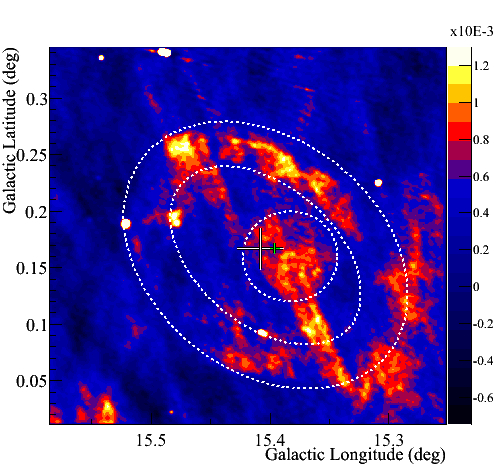Gamma rays from supernova G15.4+0.1
August 2011

With increasing exposure in the H.E.S.S. Galactic Plane Survey, new sources of very high energy gamma rays start to emerge. One of these is HESS J1818-154, located at 15.4 degrees Galactic longitude and 0.17 degrees latitude. HESS J1818-154 is detected with 7 sigma statistical significance in 145 h of observations of this region, with a flux of about 1.5% of the flux of the Crab nebula (Fig. 1). The gamma ray source appears only slightly extended; the source radius is determined to 0.07+-0.02 degrees.
The location of HESS J1818-154 coincides with the centroid of the supernova remnant G15.4+0.1, discovered in archival VLA radio data by Brogan et. al (2006). Figs. 2 and 3 show the remnant in 90 cm and 20 cm radio images, resp. The radio spectral index of the shell is -0.7, indicative of non-thermal synchrotron emission. Based on its surface brightness, the distance to the remnant can be estimated to about 9 kpc, with large errors. At this distance, the size of the shell corresponds to an age of about ten thousand years. While both radio images show indications of an ellipical supernova shell, the 20 cm image exhibits an additional component at the center of the shell, characterized by a spectral index around 0.3. The very high energy gamma ray source appears more compact than the shell (top image and Fig. 1) and coincides with the central radio feature. A plausible explanation is that G15.4+0.1 is a composite supernova remnant and harbors a pulsar and pulsar wind nebula inside the shell, with electrons of the pulsar wind nebula responsible for the gamma-ray emission, in analogy to the remnant G0.9+0.1. Future detection of a radio pulsar and/or a X-ray pulsar wind nebula at the center of G15.4+0.1 would confirm this scenario.
Reference: "Discovery of VHE gamma-ray emission from the shell-type SNR G15.4+0.1 with H.E.S.S.", H.E.S.S. collaboration, P.Hofverberg et al., submitted to the 32nd International Cosmic Ray Conference, Beijing, 2011.


